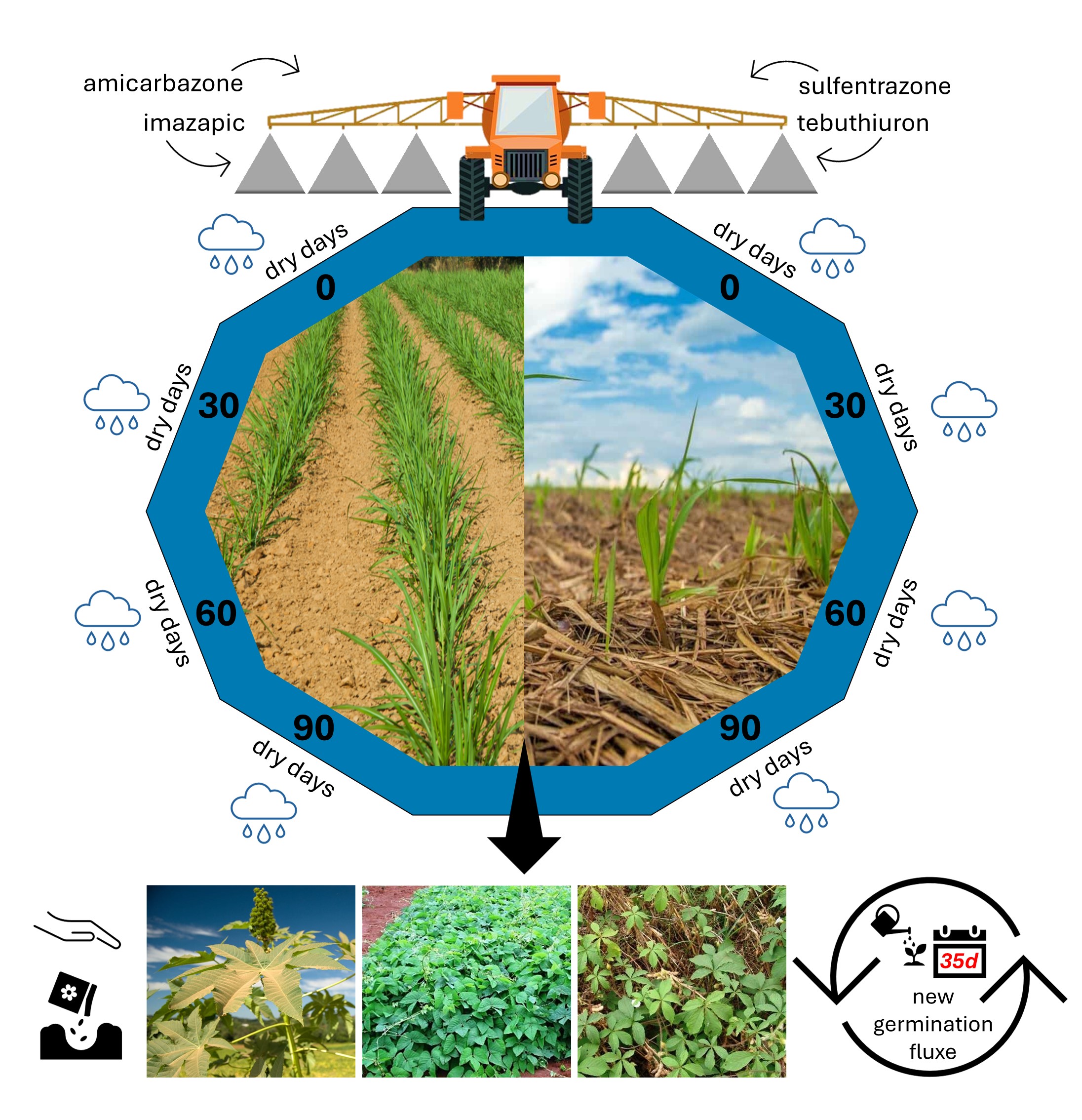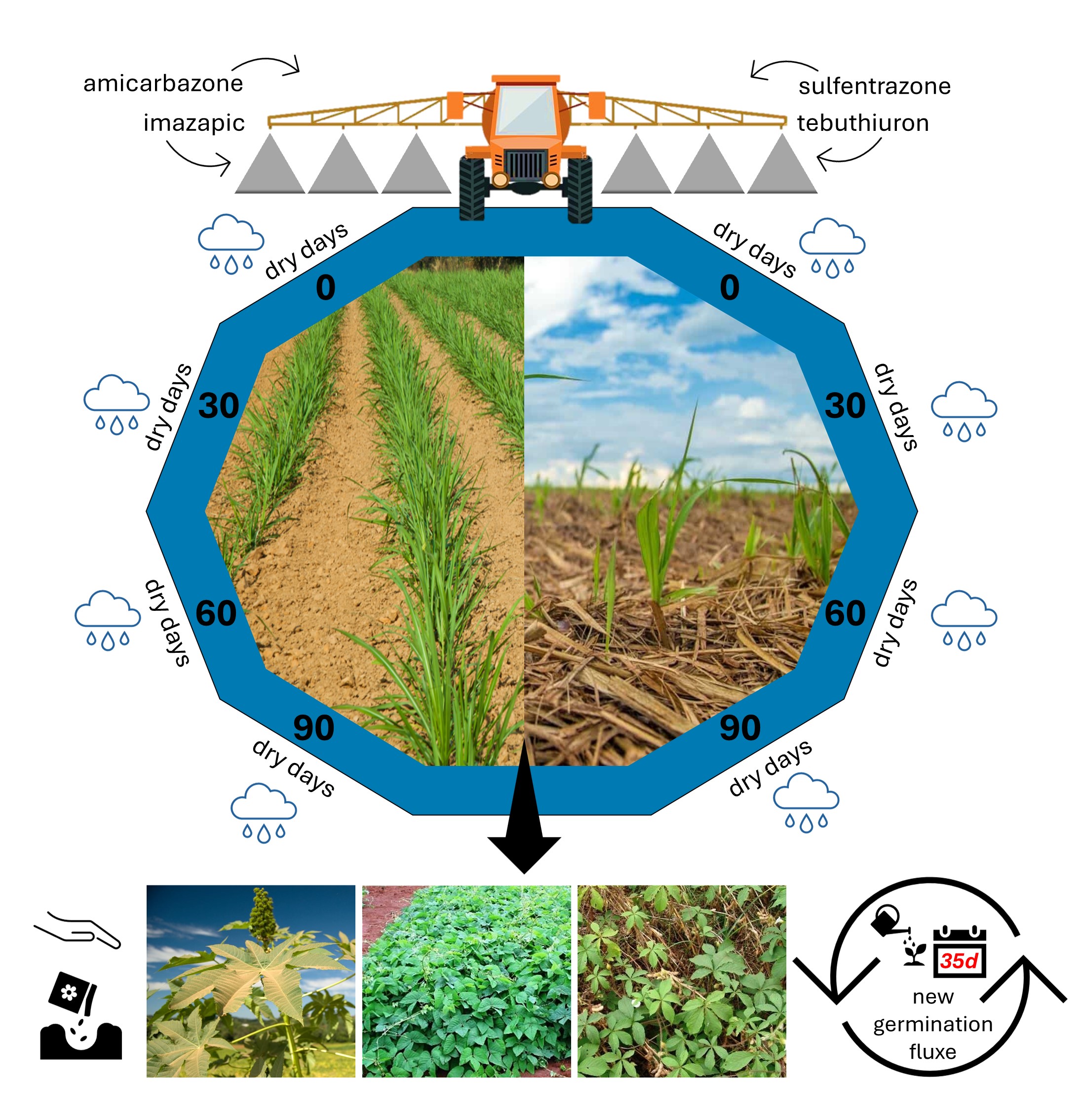Weed control in different germination fluxes with preemergent herbicides on sugarcane straw under dry periods
DOI:
https://doi.org/10.48162/rev.39.124Keywords:
amicarbazone, flush, germination, imazapic, precipitation, residue, straw, sulfentrazone, tebuthiuronAbstract

Preemergent herbicides are a frequent weed control strategy. Considering different crop germinative fluxes, these products must present long-lasting weed control. This study evaluated preemergent herbicides in different germination fluxes of Merremia aegyptia, Mucuna aterrima and Ricinus communis when applied to different quantities of straw and different simulated dry periods. The experiment was conducted in a 4 × 2 × 2 factorial design with four replications. The treatments included four dry periods (0, 30, 60, and 90 days), two straw quantities (0 and 10 t ha 1), and two germination fluxes. The herbicides amicarbazone (1225 g ha-1), imazapic (147 g ha- 1), sulfentrazone (800 g ha-1), and tebuthiuron (900 g ha-1) were applied for preemergence weed control, and germination flush fluxes were evaluated at 7, 14, 21, 28, and 35 days after emergence (DAE) while verifying plant dry mass. Amicarbazone controlled less than 80% of the studied species at the 90-day dry period in the presence of straw. Imazapic did not present control residue for any of the species analyzed. Sulfentrazone showed the same control pattern at all germination fluxes, regardless of the amount of straw. Tebuthiuron successfully controlled all species in the first germination flush, exceeding 80% regardless of the amount of straw. Herbicides associated with straw quantities and dry periods have a significant impact on M. aegyptiaca, M. aterrima and R. communis.
Highlights:
- The herbicide amicarbazone demonstrated efficacy in controlling during the first germination period of the three weed species.
- The presence of sugarcane straw significantly influenced the herbicides' control efficacy, especially during prolonged dry periods.
- The combination of straw and extended dry periods resulted in a reduction in control rates with tebuthiuron.

Downloads
Published
Issue
Section
License
Copyright (c) 2018 Revista de la Facultad de Ciencias Agrarias UNCuyo

This work is licensed under a Creative Commons Attribution-NonCommercial-ShareAlike 3.0 Unported License.
Aquellos autores/as que tengan publicaciones con esta revista, aceptan las Políticas Editoriales.


